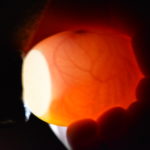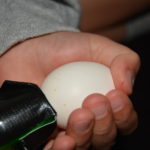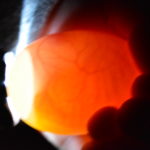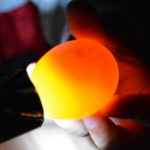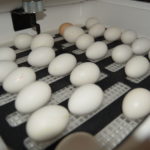Embryology Links
go.ncsu.edu/readext?661162
en Español / em Português
El inglés es el idioma de control de esta página. En la medida en que haya algún conflicto entre la traducción al inglés y la traducción, el inglés prevalece.
Al hacer clic en el enlace de traducción se activa un servicio de traducción gratuito para convertir la página al español. Al igual que con cualquier traducción por Internet, la conversión no es sensible al contexto y puede que no traduzca el texto en su significado original. NC State Extension no garantiza la exactitud del texto traducido. Por favor, tenga en cuenta que algunas aplicaciones y/o servicios pueden no funcionar como se espera cuando se traducen.
Português
Inglês é o idioma de controle desta página. Na medida que haja algum conflito entre o texto original em Inglês e a tradução, o Inglês prevalece.
Ao clicar no link de tradução, um serviço gratuito de tradução será ativado para converter a página para o Português. Como em qualquer tradução pela internet, a conversão não é sensivel ao contexto e pode não ocorrer a tradução para o significado orginal. O serviço de Extensão da Carolina do Norte (NC State Extension) não garante a exatidão do texto traduzido. Por favor, observe que algumas funções ou serviços podem não funcionar como esperado após a tradução.
English
English is the controlling language of this page. To the extent there is any conflict between the English text and the translation, English controls.
Clicking on the translation link activates a free translation service to convert the page to Spanish. As with any Internet translation, the conversion is not context-sensitive and may not translate the text to its original meaning. NC State Extension does not guarantee the accuracy of the translated text. Please note that some applications and/or services may not function as expected when translated.
Collapse ▲Live Video Link at Bottom!
Welcome to Embryology 2020!
This year, due to COVID-19, our embryology projects in 2nd-grade classrooms were cut short, but we had an idea! We’ve added pictures, a video and worksheets to this page to help you still enjoy the embryology project. Be sure to check back here on March 30th for a sneak peek inside the incubators!
Eggs were placed in incubators on March 10 and candled on March 17. Hatching should begin late on March 30 and run through March 31.
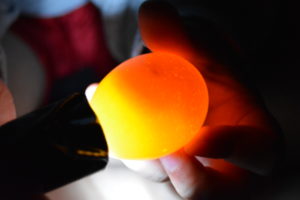
Candling an Egg
Why do we do embryology programming?
Children have a natural sense of curiosity about living things in the world around them. Building on this curiosity, students can develop an understanding of biology concepts through direct experience with living things, their life cycles, and their habitats. Many believe that students learn best through their experiences and interactions with the world. They learn by listening, observing, experimenting and applying their knowledge to real-world situations. An additional goal of 4-H programming is to help students develop life skills. Life skills are abilities that help an individual live a productive and satisfying life.
- Veins and Embryo
- Preparing to candle
- Veins
- Candling an Egg
- Eggs in Incubator
We candled an egg that was at Bogue Sound Elementary and recorded it. See the video of the embryo moving inside the egg while candling!
Want to learn more on your own? Download the Embryology Worksheets!
Watch an animated version of Chicken Embryo Development.
Watch this video to see how chickens get oxygen while in their shell.
Hey Parents! Want to make sure they got the correct answers? Click on the answers link.
It’s Day 11!
Development is really starting to speed up. If we could see our chick, it would look something like this:
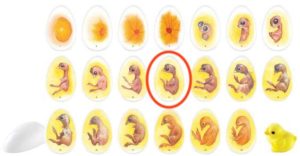
The legs of the chick are beginning to get scales and its claws are growing and starting to curl. The abdominal wall is established and the intestines are more visible. The intestine is also pushing its way back into the yolk sac, which it will fully absorb before hatching. Feathers are beginning to appear and the comb and wattles are developing. The chick will grow so rapidly now, you are likely to see just a large shadow moving if you candled the egg up until hatching.
Check out this candling video on day 11!
Want to learn more? Download these Embryology 2 Worksheets.
Parents – here’s the Embryology 2 Answers.
It’s Hatch Day!
Today is the day! We had two chicks hatch overnight. This is not unusual – some breeds will hatch a little early and some a little later than the set hatch day.
See them hatch. Start watching the video at 3:15 to see the first chick and 4:31 for the second.
A live feed has been set up to run through today (3.30.20). The video is still available for viewing.
Chicks are in the Brooder!
Most of the chicks have hatched and are in the brooder. See them here. We will be adding chicks as they hatch and dry.





